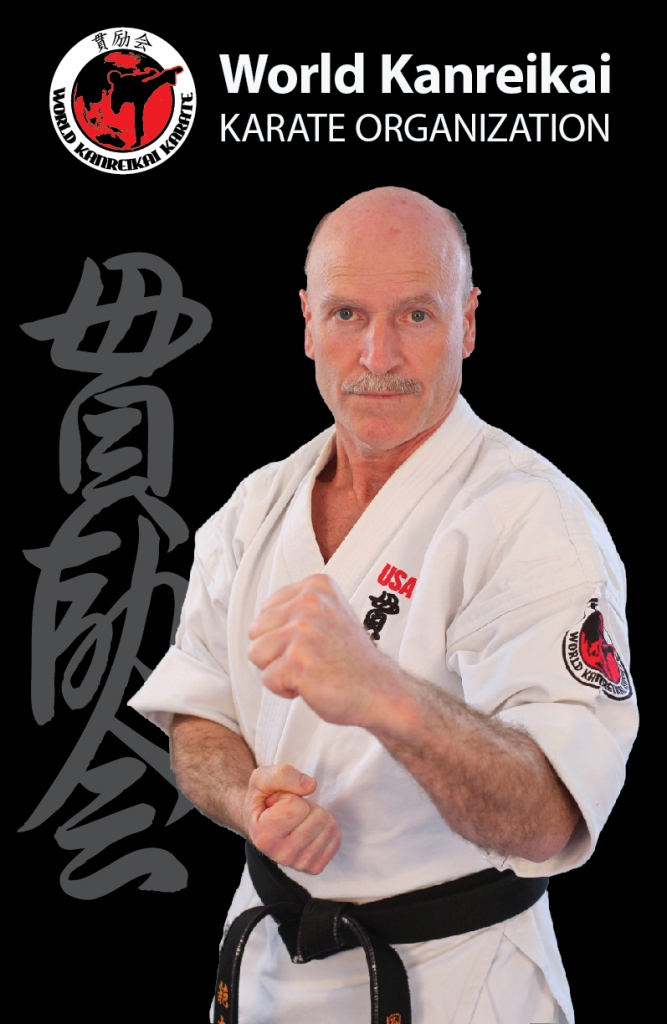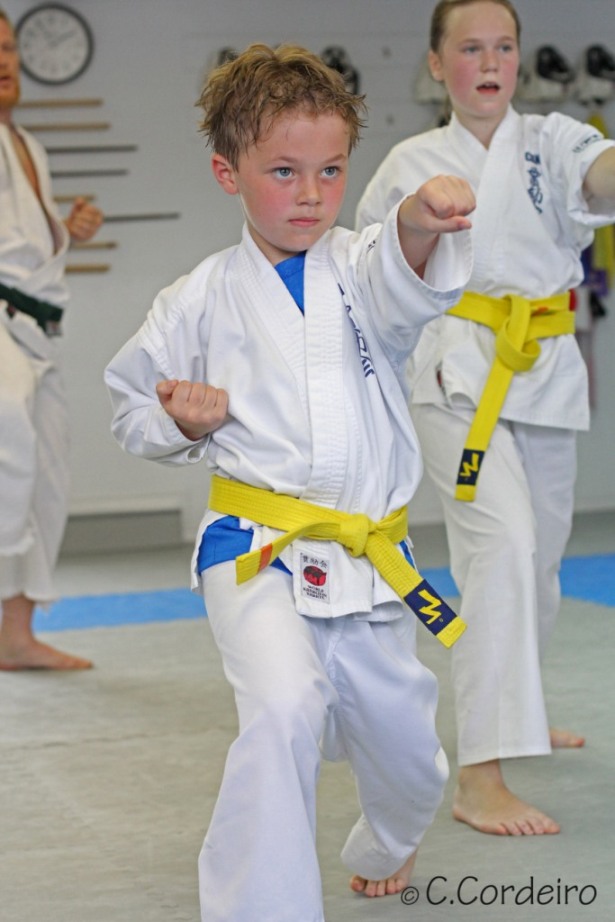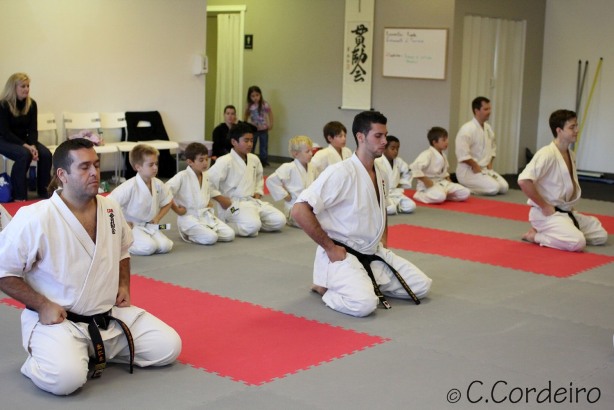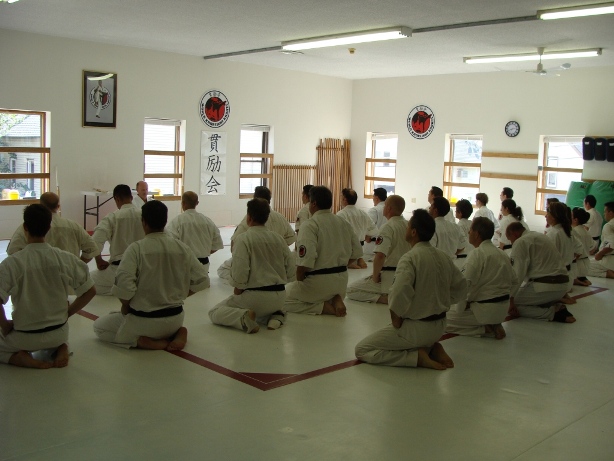Welcome
At Montreal Kanreikai Karate, as at all World Kanreikai Karate schools, we practice and teach traditional Japanese karate. We instigate a safe and respectful behavior among all our students, young and older, and hence contribute to perpetuate our art’s Japanese tradition within the organization.
Here are practical informations that will allow you to learn more about us and to discover our ways to do, rules of conduct and the Japanese terminology used at the dojo.
- KANREIKAI – A meaningful name
- OSU! – A very much used 3-letter word that says a lot
- CODE OF CONDUCT – The dojo’s rules that encourage respect, kindness and safety
- JAPANESE GLOSSARY – Japanese terminology used at the dojo and taught to all students
The name of our Organization is meaningful. It has been chosen with care and reflects the values and principles of our leaders, instructors and students:
- KAN – Reach beyond your limits
- REI – Develop your skills to the fullest
- KAI – Group – Together
In other words, we train together and support each other to develop our skills to the maximum and always reach beyond our limits! At Montreal Kanreikai Karate, following the lead of our Grand Master Hanshi Manny Matias, we focus on the development of each student in terms of his/her physical abilities, concentration and self-confidence. We prepare all our students to take on challenges whether it is at the dojo or in their daily life. We encourage them to work hard toward their goals and to never give up their dreams. We promote their individual development through the support and dynamics of the group. TOP OF PAGE

This short word is constantly used by our instructors and students. It embraces the fundamental principles of our martial art and translates a search for harmony and conviviality at the dojo.
- Patience
- The practice of karate requires effort, assiduity and patience. Each promotion must be earned through hard work and determination, no matter the time it takes. Karate is not a “race toward a black belt” but rather a constant effort to improve oneself.
- Respect
- Every student displays self-respect by training seriously and regularly. The student also shows respect toward his instructor and fellow students, generating a mutual deference charasteristic of martial arts.
- Appreciation
- The word Osu! translates the student’s appreciation toward his instructor and the other students; it is a way to say “thank you”. This word also recalls your belonging to the dojo, your solidarity and goodwill.

CODE OF CONDUCT OF THE DOJO – DOJO KUN
Our DOJO KUN ensures a respectful, safe and orderly environment. By observing this code, each student contributes to maintain our martial art’s fundamental values and optimizes his experience as a karateka.
- Bow and say “OSU!” when entering and leaving the dojo
- Express patience, respect and appreciation by saying “OSU!”
- Address the head instructor of the dojo as “Shihan Denis”
- Address the instructors of the dojo as “Sensei” or “Senpai”
- Address a Black belt karateka as “Senpai”
- Answer “OSU!” clear and loud when called by your name
- Swiftly line up in a straight line when called by the instructor at the beginning of a class
- Shake Shihan’s or a Sensei or Senpai’s hand with two hands
- If showing up late, remain at the entrance of the dojo in a kneeling position (seiza) and wait for instructor to invite you to take place on the tatami
- When asked to withdraw from the tatami, kneel down (seiza) along the wall of the dojo and wait for instructor to invite you to sit down (anza); quietly watch the training session
- Ask instructor permission to leave the dojo during a class
- Never use coarse or offensive language
- Make sure to wear a clean uniform (dogi)
- Keep fingernails and toenails short
- Do not wear shoes
- Do not wear jewels
- Do not eat, drink or chew gum
- Do not fight without permission from the instructor
- Do not use fighting techniques outside the dojo – unless you absolutely need to defend yourself
- Do not use equipment or weapons without permission from the instructor
- Respect and correctly use equipment during training




At Montreal Kanreikai Karate, we use Japanese words to count and describe the techniques we teach. Salutes and basic directives are also expressed in Japanese starting at the beginner level. Common to all World Kanreikai Karate schools, these Japanese expressions establish a sense of belonging and allow students from all Kanreikai schools to visit each other and train together.
- Japanese words and their meaning
| Anza | sitting position, relaxed, cross-legged with straight back |
| Dan | Black belt qualification level |
| Dojo | Room where martial arts are being practiced; martial arts school |
| Hajime | Start |
| Hanshi | Grand Master |
| Hidari | Left |
| Hajime | Left |
| Ibuki | Breathing out technique (a long exhalation followed by a short expiration) |
| Kamaete | Starting position |
| Karate | Japanese martial art practiced with bare hands and feet |
| Karateka | Karate practitioner |
| Kata | Imaginary fight |
| Kiai | Shout to concentrate power (power explosion) |
| Kiai Irete | Movement with a shout (Kiai) |
| Kihon Waza | Basic techniques |
| Kohai | Junior student relative to one’s qualification level (Kyu) |
| Kumite | Fight |
| Kyu | Qualification level (from White belt to Black tip) |
| Mawate | Turn |
| Migi | Right |
| Mokuso | Meditation |
| Naore | Return to starting position |
| Nidan | Second dan |
| Obi | Belt |
| Otagai | Each other |
| Rei | Salute |
| Sandan | Third dan |
| Seiza | Kneeling position, fists tight on hips, straight back (for salute and meditation) |
| Senpai | Senior student relative to one’s qualification level (Kyu); Black belt karateka |
| Sensei | Teacher in charge of the school |
| Shihan | Master |
| Shodan | First dan |
| Tatami | Training mat |
| Yamei | Stop |
| Yoi | Ready |
- Chiffres japonais
| Ichi | 1 | ||
| Ni | 2 | Niju | 20 |
| San | 3 | Sanju | 30 |
| Chi (Yon) | 4 | Yonju | 40 |
| Go | 5 | Goju | 50 |
| Roku | 6 | ||
| Sishi (Nana) | 7 | ||
| Hachi | 8 | ||
| Ku | 9 | ||
| Ju | 10 | Kyaku | 100 |
- Salutes in Japanese
- Beginning of class:
- Hanshi Ni Rei – Mokusu – Mokusu Yamei, Shihan (Sensei, Senpai) Ni Rei Salute to Hanshi – Meditation – End of meditation, salute to Shihan (Sensei, Senpai) (Training starts)
- End of class:
- Hanshi Ni Rei – Mokusu – Mokusu Yamei, Shihan (Sensei, Senpai) Ni Rei Salute to Hanshi – Meditation – End of meditation, salute to Shihan (Sensei, Senpai) (Training ends)
- Sensei, Senpai Otagai ni Rei Mutual salute between students, Senpai, Sensei
- Beginning of class:
